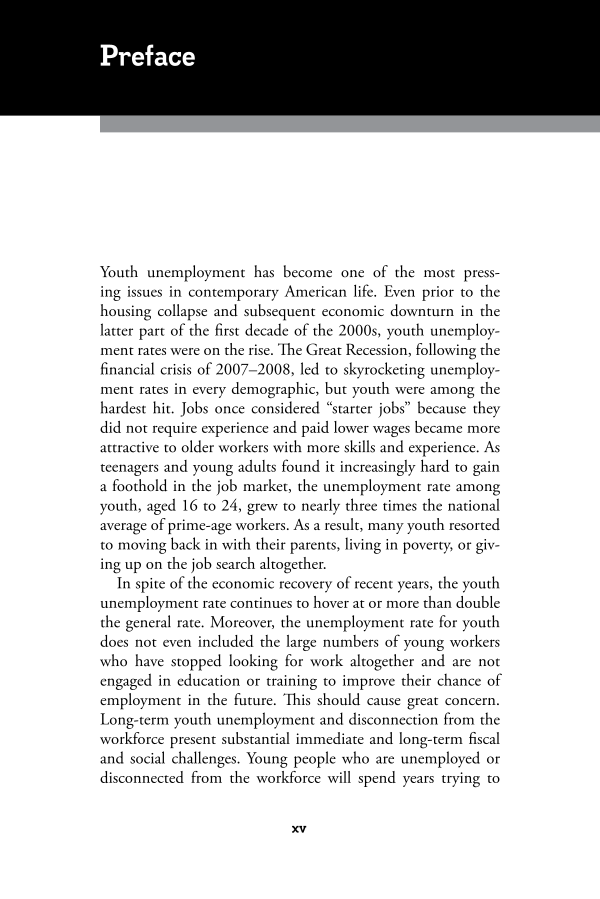xv Youth unemployment has become one of the most press- ing issues in contemporary American life. Even prior to the housing collapse and subsequent economic downturn in the latter part of the first decade of the 2000s, youth unemploy- ment rates were on the rise. The Great Recession, following the financial crisis of 2007–2008, led to skyrocketing unemploy- ment rates in every demographic, but youth were among the hardest hit. Jobs once considered “starter jobs” because they did not require experience and paid lower wages became more attractive to older workers with more skills and experience. As teenagers and young adults found it increasingly hard to gain a foothold in the job market, the unemployment rate among youth, aged 16 to 24, grew to nearly three times the national average of prime-age workers. As a result, many youth resorted to moving back in with their parents, living in poverty, or giv- ing up on the job search altogether. In spite of the economic recovery of recent years, the youth unemployment rate continues to hover at or more than double the general rate. Moreover, the unemployment rate for youth does not even included the large numbers of young workers who have stopped looking for work altogether and are not engaged in education or training to improve their chance of employment in the future. This should cause great concern. Long-term youth unemployment and disconnection from the workforce present substantial immediate and long-term fiscal and social challenges. Young people who are unemployed or disconnected from the workforce will spend years trying to Preface
Document Details My Account Print multiple pages
Print
You have printed 0 times in the last 24 hours.
Your print count will reset on at .
You may print 0 more time(s) before then.
You may print a maximum of 0 pages at a time.
































































































































































































































































































































